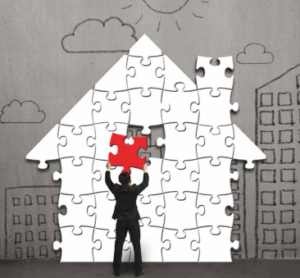Affordable Housing in India

Affordable Housing in India
India, the third-largest developing economy in Asia enjoys a unique position. The present government with its focus on business and growth for the nation is keen to undertake reforms critical for reviving growth.
As India gears itself towards sustained growth; the real estate sector’s significance becomes an area of key importance. The quest for affordable housing in India is resulting in rapid urbanisation and growing occupier demand are key factors expected to drive real estate demand in the nation.
The population of India was 1.2 billion in 2011 and there has been an addition of 180 million in the previous decade. During 2001-11, perhaps for the first time in Indian history, the urban population grew more than the rural population.
Part of this change in population dynamics is because undoubtedly more than 2,500 settlements that were defined as villages in 2001 were reclassified as towns in 2011.
Rapid urbanisation is also perceived as a significant contributor to demographic shift. The country’s urban population has grown at a compound annual growth rate (CAGR) of 2.8% over 2001-11, resulting in an increase in the urbanisation rate from 27.8% to 31.2%.
Out of India’s population of 1.21 billion, 377 million people are urban dwellers and with more than 10 million people being added to urban areas every year, India’s urban population is expected to reach about 600 million by 2031.
Furthermore, over 2015-31, the pace of urbanisation is likely to increase at a CAGR of 2.1% – double than that of China. Migration is the key process driving urbanisation.
The influx of population into urban areas is stimulated by the attraction of cities for their employment opportunities; better standard of living, better educational facilities, infrastructure, need for status, etc.
And with growth in sophisticated technology coupled with better infrastructure, communication and medical facilities, people feel that they can lead a comfortable life in the cities Disordered urbanisation is reflected in almost 65.5 million Indians who, according to the country’s 2011 Census, live in urban slums.
In addition, according to the World Bank’s Agglomeration Index, a globally applicable alternative measure of urban concentration, the share of India’s population living in areas with urban-like features in 2010 was 55.3 per cent. This compares to an official urban share of the population of just over 31 per cent, suggesting the existence of considerable hidden urbanisation.
Messy urbanisation is reflected in the widespread existence of slums and sprawl. Sprawl, in turn, helps give rise to hidden urbanisation, particularly on the peripheries of major cities, which is not captured by official statistics.
Messy and hidden urbanisation is symptomatic of the failure to adequately address congestion constraints that arise from the pressure of urban populations on infrastructure, basic services, land, housing, and the environment. Given this scenario, it becomes critical to fill the existing gaps in the country’s strained urban infrastructure and in particular, housing.
In this context, it would be important to address the need in the EWS (economically weaker sections) and LIG (lower income groups), which currently account for 95.6% percent6 of urban housing shortage in the country.
Amid the growth of urbanisation, the housing shortage in India has touched 18.78 million units 7.56% of households in urban India now have four or less members. This is a marked change from 10 years ago, when the median household size in urban India was between four and five members and would increase the demand for housing in the urban context with the growth of smaller families.
the supply side constraints for low-cost and affordable housing include lack of availability of land and finance at reasonable rates, the demand drivers include the growing middle class and urbanisation. Real estate developers, private players in particular, have primarily targeted the luxury, high-end and upper-mid housing segment owing to the higher returns that can be gained from such projects.
In addition, several structural issues, such as the high gestation period of housing projects, limited and expensive capital, spiralling land and construction costs, high fees and taxes as well as unfavourable development norms are bottlenecks restricting the desired growth in housing stock in India.
The government recognising this need has acknowledged the importance of the housing issue in the country. The Planning Commission of India’s Twelfth Plan delineates fast-paced, inclusive and sustainable growth.
Urbanisation should be guided towards inclusive and equitable growth of towns and cities with proper civic amenities. The key would be to focus efforts towards land and housing policy reforms, delegation of power to urban local bodies, fostering innovative housing finance and steps for reduction in project costs and schedule overruns. Planned urbanisation would ensure that towns and cities are free from slums and provide for adequate opportunities for productive employment and an optimum quality of life to all their inhabitants including the marginalised segments of society.
Also read: Sustainable India 2047
India’s urbanisation
